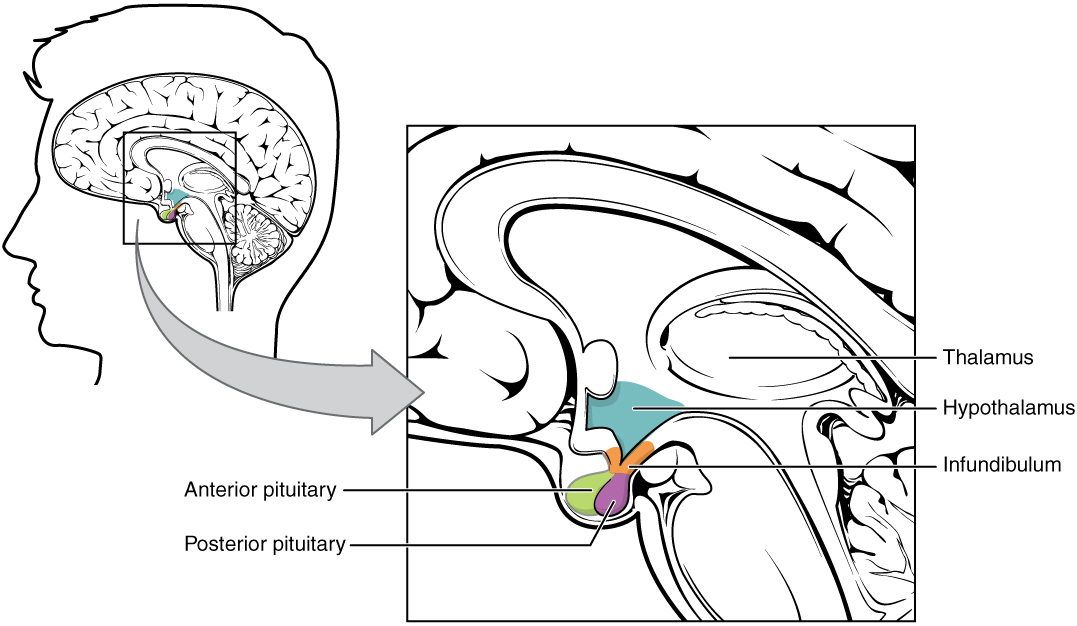Playlist
Show Playlist
Hide Playlist
Pituitary Gland: Hormones
-
Slides 04 Human Organ Systems Meyer.pdf
-
Reference List Histology.pdf
-
Download Lecture Overview
00:01 Well, let’s first of all look at a hormone, its chemical nature or structure. Hormones are the secretory products of the endocrine cells. 00:12 Sometimes, other cells, not part of the endocrine system, also secrete products that we referred as being chemical messengers. Hormones can be classed chemically into three types that I’ll go through in a moment. But I just want to make sure we know the difference between endocrine secretion, paracrine secretion, and autocrine secretion, and also exocrine secretion. In a separate lecture on exocrine glands, I explained that these glands are derived from epithelial surfaces. The epithelium grows down underneath the epithelial surface within the connective tissue, the lamina propria and there, these cells develop into secretory cells, and they maintain their connection to the surface through what becomes the duct of the exocrine gland. In the case of endocrine glands, the cells lose their connection to the surface. The duct disappears and so these secretory cells then release their products, hormones, into the surrounding interstitium. And thereby, the product is taken from the interstitium into the blood stream. And so these hormones can travel right throughout the body, and they can affect target organs at some distance from the original source of the hormone. 01:46 That’s a true endocrine gland, true endocrine secretion. Sometimes cells can secrete hormones or products that affect their own function. That’s called autocrine cells. Being autocrine meaning secretion, secreting to affect oneself. Sometimes these cells can secrete hormones that move along the interstitial fluid and affect neighboring cells, that's referred to as paracrine secretion. But in this lecture, I’m going to refer mainly to only true endocrine type secretion. Well, hormones are of three types. One, they can be steroid hormones, or they can be peptide protein or polypeptide hormones. Some hormones can be derived from amino acids. 02:45 And here on this slide, I’ve listed the various locations that these hormones and the organs are secreting, and I’ll refer to this in a later lecture. But the reason why I’m showing you these three different classes is because the chemical nature of these hormones is different. And therefore, sometimes when you see the locations of these cells in the various endocrine glands of the body, you can stain for these different sorts of hormonal products. 03:18 And these stains can often be used to distinguish the various types of endocrine glands. 03:24 As we’ll see in this lecture on the pituitary gland, we will see that various stains are used because they differentiate the components of the secretory cells. And again, as I said, this will be repeated in another lecture on the other endocrine glands. Well, when a hormone is secreted, it can affect the cell at two sites. One, it can bind to a receptor on the surface of the target cell. In some other cases, it moves into the cell and it reacts with receptors within the cell itself and the cell biologist and the endocrinologist will describe these processes in other courses. It’s important to understand a little of about the regulation of the endocrine system. We call it a feedback system, a feedback mechanism, whereby, the stimulus then goes through the endocrine cells, and the endocrine cells secrete a hormone, and that hormone has an effect. And when the effect then feeds back on the original stimulus and diminishes that stimulus, we call that negative feedback. And that’s the most common feedback mechanism we have in the endocrine system. Rarely though, sometimes, we have a positive feedback system, which is the opposite.
About the Lecture
The lecture Pituitary Gland: Hormones by Geoffrey Meyer, PhD is from the course Endocrine Histology.
Included Quiz Questions
Which of the following does NOT constitute a separate chemical class of hormone?
- Carbohydrates
- Steroids
- Peptides, polypeptides, and proteins
- Amino-acid-derived hormones
Which of the following is NOT a type of secretion?
- Etnocrine
- Paracrine
- Endocrine
- Autocrine
Customer reviews
5,0 of 5 stars
| 5 Stars |
|
5 |
| 4 Stars |
|
0 |
| 3 Stars |
|
0 |
| 2 Stars |
|
0 |
| 1 Star |
|
0 |





